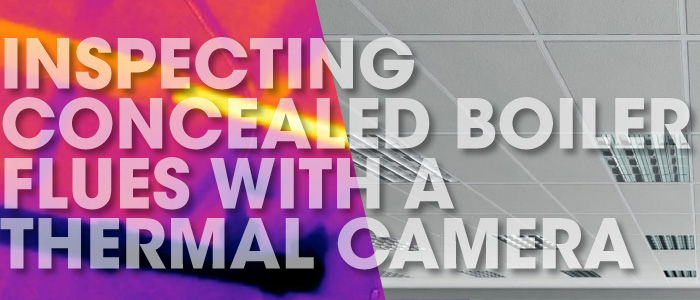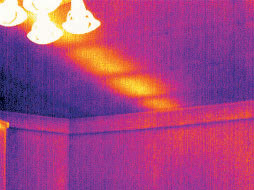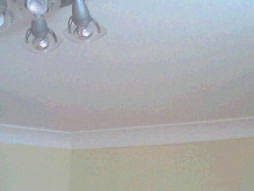
One of the most useful applications of thermal imaging for heating engineers solves one of the most frustrating problems associated with flue gas analysis. Concealed boiler flues can often be difficult to trace across interior walls in properties and it is sometimes difficult to see whether flues have been well maintained or even correctly installed. Thermal imaging provides a helpful aid when inspecting these flue runs, thus saving time and money.
Choosing Your Thermal Camera
Temperature range is not an important consideration when it comes to locating concealed boiler flues as temperatures typically fall between room temperature (18˚C to 21˚C) and a few degrees warmer (up to 24˚C or 25˚C). Instead, thermal resolution and sensitivity are the main factors to consider when selecting a thermal imager. In particular, a thermal resolution of at least 160 x 120 pixels and thermal sensitivity of 100mK (0.1˚C) would be required as the temperatures involved cover a very small range. Suitable models might include the FLIR E6-XT and FLIR E8-XT. Our full catalogue can be viewed here whilst we also offer an expansive hire fleet.
Finding a Concealed Boiler Flue
To find a concealed boiler flue, the user should wait for the property to be as cool as possible before switching the boiler on so that the walls are cool, thus highlighting the warmth of the boiler flue. Typically, assuming that the room is at an average temperature, the boiler flue should show at 2-3˚C above. Figure 1 shows a boiler flue fitted across the ceiling, as highlighted by the yellows and oranges compared to the pink/purple of the walls. The intersecting purple lines across boiler flues are beams in the ceiling. Notably, the flue is just 2˚C above the ceiling surface temperature.
Figure 1:


Once the boiler flue has been successfully identified and traced across the ceiling/wall, heating engineers can install inspection hatches at appropriate points in order to check that the flue has been installed and maintained correctly. This therefore solves a major problem and allows the user to quickly and accurately locate the flue without reference to building plans.
